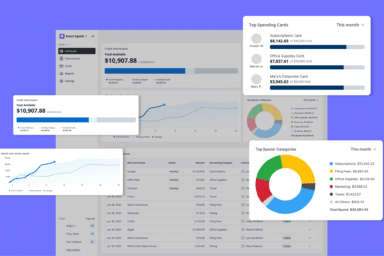ABA Survey: Mobile Lawyer Trends in 2021
Feb 2, 2021
| 6 min readEvery year I write a post that highlights the mobile lawyering statistics from the latest ABA Legal Technology Survey Report. The statistics from this annual Report provide lots of data on how lawyers are using mobile and cloud computing tools to work from any location, and also provide insight into the rate at which that shift has occurred. Not surprisingly, the number of lawyers working remotely has increased year over year as attorneys became more comfortable using the technologies that permitted them to work from anywhere. The events of 2020 only served to accelerate that trend.
Although the most recent Report was released at the end of 2020, it contains data obtained from lawyers through the early months of 2020. In other words, the results reflect the work habits of lawyers before March of 2020, when the pandemic shut downs forced law firms across the country to unexpectedly shift to remote work.
Obviously those statistics aren’t reflective of the current remote working environment. They’re nevertheless a good benchmark, and when considered with the results of two surveys that MyCase conducted in mid-2020, provide a relatively accurate picture of how law firms are adjusting to the reality of remote work. So without further ado, let’s dive into the findings.
The rise of mobile lawyers
First, let’s take a look at the statistics regarding the tools lawyers use to work remotely. As the data from the Report shows, lawyers are increasingly relying on laptops to get work done, whether in or out of the office. According to the ABA Report, when it comes to desktop computers, there has ben a a downtrend over the past 4 years. The 2020 survey results indicate that 49% of lawyers reported that they used desktops as their primary computer (compared to 57% in 2019, 59% in 2018, and 60% in 2017). Conversely, the number of attorneys relying on laptops increased during that same timeframe, with 47% using laptops as their primary computer (compared to 41% in 2019, 38% in 2018, and 39% in 2017).
When it comes to working from home, understanding how lawyers conduct legal research remotely and which tools they use is a great place to start. According to the ABA Report, 90% of lawyers sometimes use laptops to conduct legal research while away from the office. 70% report that they’ve used smartphones or BlackBerrys, 52% sometimes use home desktops, 53% rely on tablet devices, 12% use e-book readers, 8% use AI assistants, 5% use internet kiosks, and 5% conduct legal research with smart wearables.
The younger the lawyer, the more likely they were to conduct research remotely. Lawyers younger than age 40 were the most likely to do so (69%). Next in line were 65% of lawyers aged 40-49 years old, followed by 61% of attorneys who were 50-59, and 60% of lawyers 60 years and older.
Interestingly, lawyers with certain practice areas focuses were more likely to conduct legal research remotely on a laptop, with litigation-focused lawyers being the most likely to do so (70%), followed by commercial litigation attorneys (69%), and employment/labor (61%), and general practice (61%).
Not surprisingly, once the pandemic struck, many law firms shifted their workforce from the office to their homes, which is where most day-to-day work was conducted. As a result, the use of remote-working cloud-based software increased exponentially. According to the April 2020 MyCase Survey, there was a meteoric rise in video conferencing tools by the legal professionals surveyed, with 64% reporting that their workforce was relying o this software to interact with clients and staff virtually. Similarly, another popular addition to the technology stack of many firms at the start of the pandemic was new hardware (phones, laptops, etc.) with 25% of lawyers surveyed reporting these upgrades were implemented in order to facilitate remote work.
The increase in virtual law practices
The necessary shift to remote work caused by the pandemic resulted in a rise in the level of legal work that was conducted – and provided – virtually using cloud-based technology. But as the results from the ABA Report show, prior to the pandemic, this transition was already in the process of occurring.
But first, let’s examine what lawyers mean when they say they have “virtual practices.” According to the ABA Report, the lawyers surveyed reported that they considered the following characteristics to be necessary elements of a virtual law practice: 1) the ability to travel and work from anywhere (91%), 2) the ability to work outside of normal business hours (91%), 3) minimal in-person contact with clients (67%), 4) better work-life balance (57%), 5) open for business 24/7 (50%), 6) a lack of traditional physical office space (50%), 7) use of web-based tools for client interaction (48%), and 8) lower costs/pricing due to lower overhead (41%).
According the the ABA’s survey, 8% of lawyers described their practice as a virtual law practice even before the pandemic, with solo law firms being the most likely to report that their firms functioned as a virtual law practice (12%). Lawyers from firms of 2-9 attorneys were close behind at 9%, followed by 6% of lawyers from firms with 10-49 attorney and 6% of lawyers from firms with 100 or more attorneys. The primary practice areas handled by the lawyers most likely to provide legal services virtually were corporate (13%), commercial litigation (8%), trusts and estates (8%), and real estate (8%).
Once the pandemic hit, most lawyers were required to provide some form of virtual legal services. The results of the first MyCase survey in April showed that 87% of the firms surveyed were operating remotely and providing virtual legal services in some capacity. Notably, 75% of lawyers surveyed reported that their firms transitioned to remote work in less than a week. A deeper look reveals that of those firms who transitioned within one week, 60% made the transition inside of one day, suggesting that law offices were either quick to update their technological infrastructure and/or had ample technological resources already in place to initiate a rapid shift.
Finally, when lawyers were asked in the June MyCase Survey how the pandemic and its affects had changed their perspective on the future of law practice, the survey respondents overwhelmingly shared that they believed that firms that fail to implement or utilize cloud technology now will be more susceptible to financial hardship in the future. Also of import is that a full 70% of lawyers surveyed agreed that cloud technology is paramount to financial stability for law firms going forward.
Do these survey findings comport with the lessons you’ve learned from the pandemic? How many members of your firm’s workforce continue to work remotely right now? Finally, how is your firm planning to incorporate remote working tools into its IT arsenal in 2021?
And, last but not least, if you’d like to learn more about the rest of the findings from the MyCase surveys, make sure to download the full survey results from the MyCase Surveys here.


